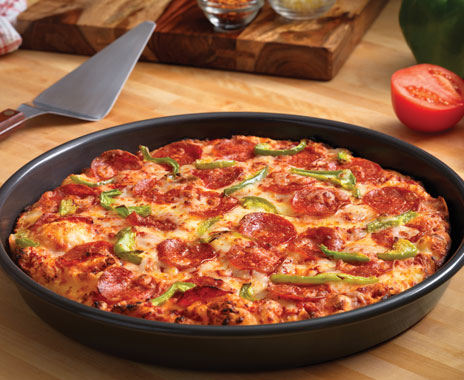By its own estimation, Domino’s finished strong in the fourth quarter of 2017. And while the company posted positive percentages across the board, investors are less impressed with the numbers, which fell short of expectations during the February 20 investor call.
Industry experts had estimated same-store sales to increase 5.93 and 6 percent at corporate and franchise stores, respectively. The reality fell short with company-owned locations only clocking 3.8 percent growth and 4.2 percent at franchise stores. Those results stand in stark contrast to the previous quarter when same-store sales soared 8.4 percent. It also signals the lowest quarterly growth rate in four years.
No single factor can be blamed as the reason for the underperformance, and analysts are pointing to everything from store cannibalization to the rise in delivery options thanks to third-party providers.
“All in all, while there are areas to collect and continue to improve, I am pleased with the results this extremely strong model continued to produce and exciting as ever about our future and continuing to aggressively grow and fortress in all markets and territories driven by our strong master franchisee base that continues to get it done,” president and CEO J. Patrick Doyle said on the call. The report will be one of the last delivered by Doyle who will step down in June when president of international, Richard Allison, succeeds him.
Doyle is largely credited with driving Domino’s turnaround when he took the reins in 2010. Since then the pizza juggernaut has continued to beat its own benchmarks, but years of monumental growth does raise the question as to whether Domino’s can continue to outperform itself by leaps and bounds. Case in point: In Q3 the company beat investor expectations but that 8.4 percent in same-store sales growth presented a notable gap from 13.8 percent the same quarter the previous year.
Still, the company appears hell-bent on its never-ending quest for self-improvement with technological advancement and integration continuing to serve as a market differentiator. In 2017, Domino’s one-upped its splashy emoji ordering functionality with Alexa and voice capability, which Doyle called “glowingly popular.” The company also strengthened its digital loyalty through its expanded suite of ordering platforms.
“We are the technology disruptors,” Doyle said in his closing remarks. “We will invest to stay ahead in 2018 and beyond, making every effort to keep the advantage we have worked so hard to build.”
Although the final quarter of 2017 marked 96 consecutive quarters of positive international same-store sales growth, global business was less than stellar—growth at a meager 2.5 percent. Chief financial officer Jeff Lawrence said this number was negatively impacted because of a shift in Q4’s close date, which shifted from January 1 to December 31. Nevertheless it’s not the first time in recent memory that international sales have proven a pain point for Domino’s. The same quarter the previous year, international same-store sales were 4.3 percent, compared with expectations of 5.8 percent. Doyle conceded that market volatility dragged sales down but expressed optimism in the company’s long-term plan to establish a stronghold across markets, thus blocking out the competition. He credited Domino’s strong unit economics and accelerated growth for the recent departure of a competitor Papa John’s in India.
“We didn’t comp them out of the market, but instead relied on unit economics that encouraged rapid growth and continue making it extremely difficult for others to get their foot in the door,” Doyle said. “This approach, which is being executed globally, is perhaps one of the more exciting strategies around the future of our business. Needless to say, it’s working.”
The company attributed its soft numbers to both a more volatile international market and sales dilution across an expanding system. Domino’s only closed 13 stores domestically and 62 abroad, collectively the lowest level in two decades. The fourth quarter ended with a net addition of 422 stores.
“I discussed at last year’s Investor Day, my thoughts on the importance of store closures and how it is often a key and underrated metric on measuring the stability and potential for any business. It’s been an issue for many within our category,” Doyle said. “With the lowest amount of closures we have had in over two decades and one of the more favorable signs highlighting the continued momentum around our model, performance, and unit economic strength within this business.”
The earnings report comes on the heels of acquisition rumors. According to an exclusive in business publication Brazil Journal, Restaurant Brands International (RBI), parent of Burger King, Tim Hortons, and Popeyes, is considering a bid for the pizza czar. As the article points out, such an acquisition would add a crucial category to the already diversified group.
“While looking at potential acquisition targets, RBI also considered YUM! Brands, but Domino’s—besides being a smaller, more digestible target—carries an additional appeal,” wrote Geraldo Samor, founder of Brazil Journal. “In recent years it has dramatically innovated its business model, embracing technology like no other company in the industry.”
This report has been unconfirmed by Domino’s, RBI, or another news outlet, but the possibility gives investors something to chew on—besides the company’s latest earnings.







